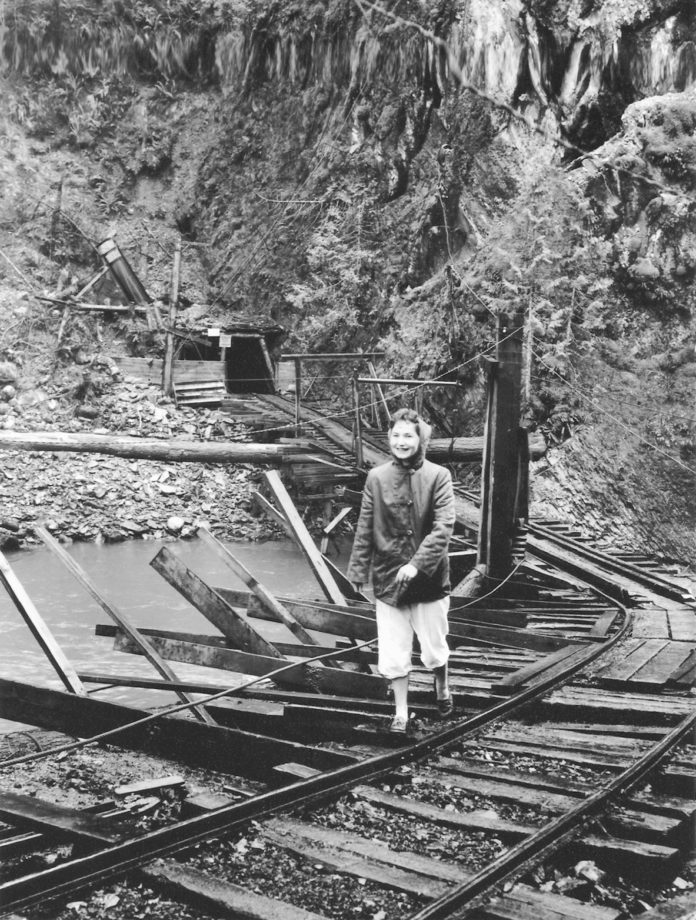Last week’s column detailed the workings of the Franklin No. 12 coal mine. That 1950s underground mine was located east of the Green River, while the tipple and load out facilities were on the west side. This photo looking east shows Mrs. Ronald Frazier crossing the timber-beam bridge which spanned the river and connected the mine and tipple. The tunnel opening to the mine can be seen in the center left, with coal seam strata rising steeply to the right above the timbered mine opening.
The mine was about one-half mile downstream from the Green River Gorge bridge, which is adjacent to the old town of Franklin. Lucile McDonald wrote about Franklin in the Sept. 3, 1961 issue of the Seattle Times, reporting the bridge was built after World War II by Pacific Coast Coal Co., who drove tunnels on the opposite bank. An open pit mine on the hillside west of Franklin was operated on the same 45-foot-thick seam, starting in the late 1940s and into the 1950s. By the time of this April 1959 photo, the mine and surrounding properties were owned and operated by Palmer Coking Coal Co.
In the late years of the 1950s, the U.S. was engaged in a Cold War with the U.S.S.R. Both sides possessed large stockpiles of nuclear weapons. Local defense agencies were tasked with making plans to protect civilians in the event of nuclear attack. Patricia Frazier of Black Diamond was concerned for her children’s safety and spearheaded local efforts to find a radiation fall-out shelter in case of nuclear war. Mrs. Frazier and a group of neighbors considered the Franklin No. 12 mine and thought it could fit their needs. John H. Morris, president of Palmer gave his permission, and Edward Connor, Seattle-King County civil-defense director granted approval as reported in the March 17, 1959, Seattle Times.
The horizontal tunnel extended over 3,500 feet under a hill. Since it was dry with an almost constant 50-degree temperature, provisions could be safely stored underground for a long time. The mine passed state safety tests and could withstand the area’s worst earthquakes. In an emergency, evacuees could enter the mine and use it as a bomb shelter. Fortunately, war was averted. The mine flooded in Nov. 1959 and never reopened. How long this bridge survived after the photo was taken is lost to history.








